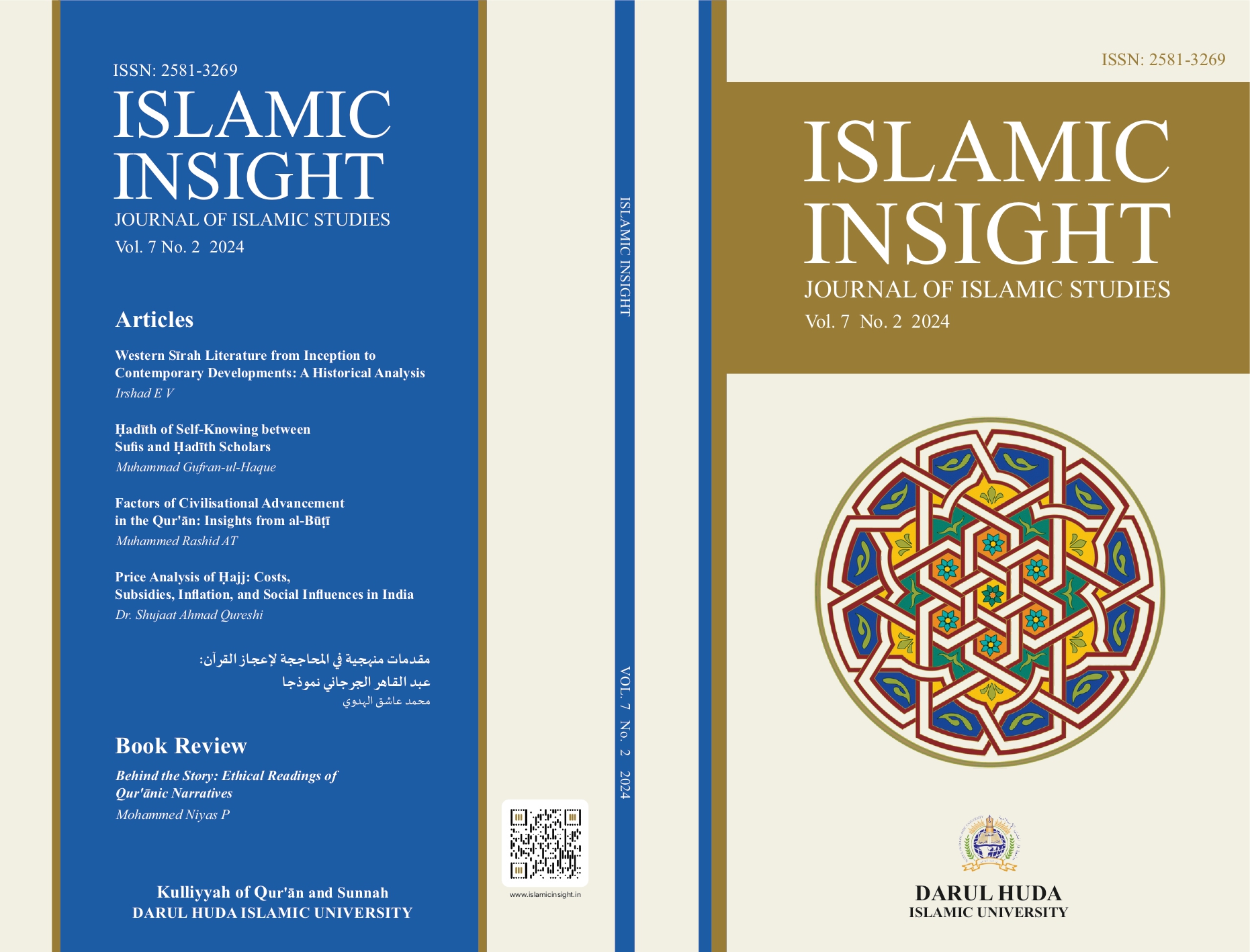THE KHUFF IN MUSLIM RITUAL THOUGHT: THE CURIOUS CASE OF A BOOT’S RELIGIOUS IDENTITY
Keywords:
Khuffayn, Ritual Studies, Islamic Law, Fiqh, Shia Studies, Ibadi Studies, Islamic Theology, Islamic FootwearAbstract
Typically, Islamic footwear is not casual conversation that one might
have in the elevator, even amongst Islamic Studies academics.
Slippers, leather socks, boots, moccasins, or whatever one may want
to call them, the “khuffayn” are generally regarded as no more than a
footnote by academics. Often, it is merely gleamed over as a mundane
snippet of Ṭahāra (purity), and not deeply investigated. The reality is
that the issue of footwear in medieval and contemporary Islam is
surrounded by nuanced discussion and debate. Investigating the
Qurʾān, medieval Ḥadīth literature, various books of Islamic law, and
theological treatises, the researcher discovered that not only do the
khuffayn have legal ramifications, but also creedal. Some of the
books examined are the Ṣaḥīḥayn, Shamāʾil Tirmidhi, Kitāb al-Āthār
of Abū Ḥanīfa, The Muwaṭṭāʾ, The Musnad of Imam Shāfiʿī, Al-
ʿAqīda aṭ-Ṭaḥāwīya, Abū Ḥanīfa’s al-Fiqh al-Akbar, and so on. The
mass mention of the khuffayn indicates that it was an important topic
to the authors writing it down. The researcher wanted to know what
exactly the physical khuff was? And how Sunni Muslims
conceptualized footwear’s legal and theological implications from the
medieval period until now? This adds to the ongoing debate between
the supremacy of ritual vs. theology. Through analyzing the medieval
passages that the researcher used, it became apparent that in the early
period, the khuffayn were never physically described. They were so
common that the reader was assumed to be quite familiar with the
footwear. In the stipulations of the jurists as to what components the
khuffayn may consist of, or what basic elements constitutes a khuff,
we are able to paint a partial picture as to what they might’ve been.
Furthermore, in the later medieval period (11th - 17th centuries) we
start to see more of a physical description of the khuffayn. The descriptions indicate that the khuffayn were probably a type of leather
moccasin-boots, which had some universality in the Near East, and
even East Africa. It is not until the 19th century that footwear besides
the khuffayn and Jarmūq (galosh) are mentioned. Shoes appear in the
Ḥanafī encyclopedic text Ḥāshiya Ibn ʿĀbidīn. Contemporary Sunnis
think about footwear and purity in a very different way. The
researcher demonstrate textually how late Sunni traditionalists, and
different revisionist groups conceive of modern footwear, both legally
and theologically, which often diverges significantly from medieval
conceptualizations. However, in the medieval period up until our
contemporary time, wiping over the khuff has been a ritual that marks
sectarian identity so much so that it is considered a part of Islamic
creed to affirm or reject the practice. So, is wiping over the khuff a
ritual or theologizing? Perhaps, both.


